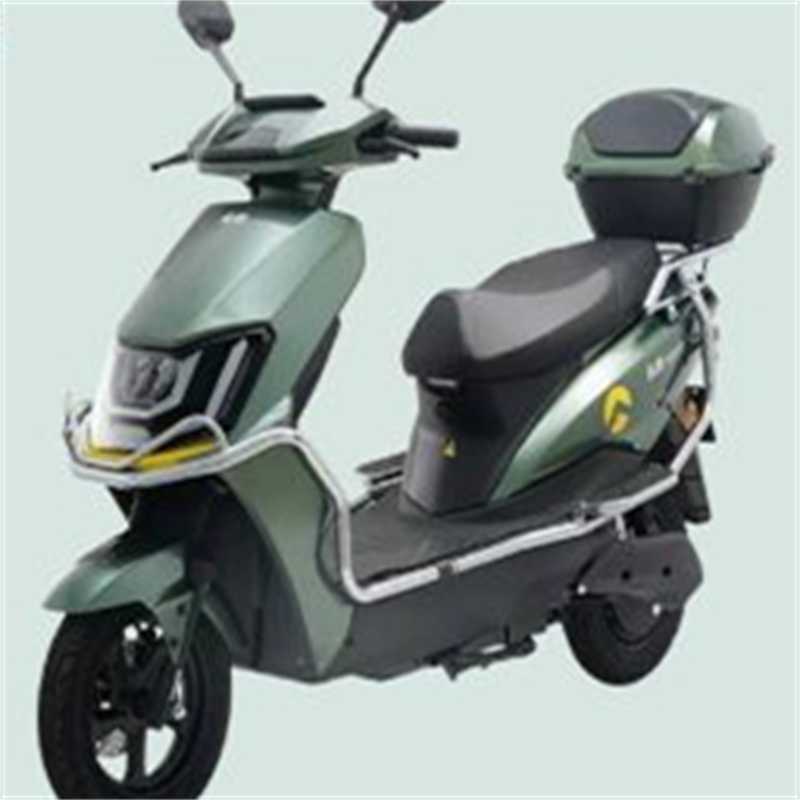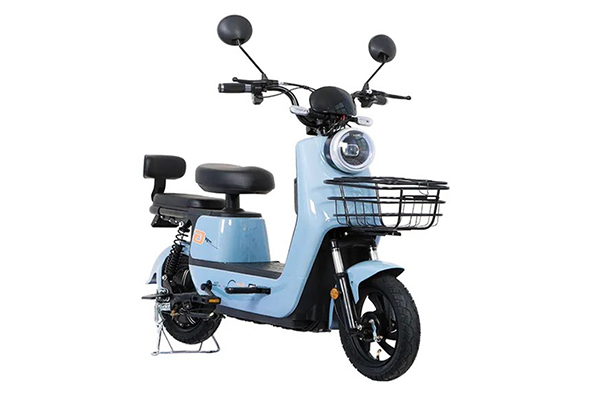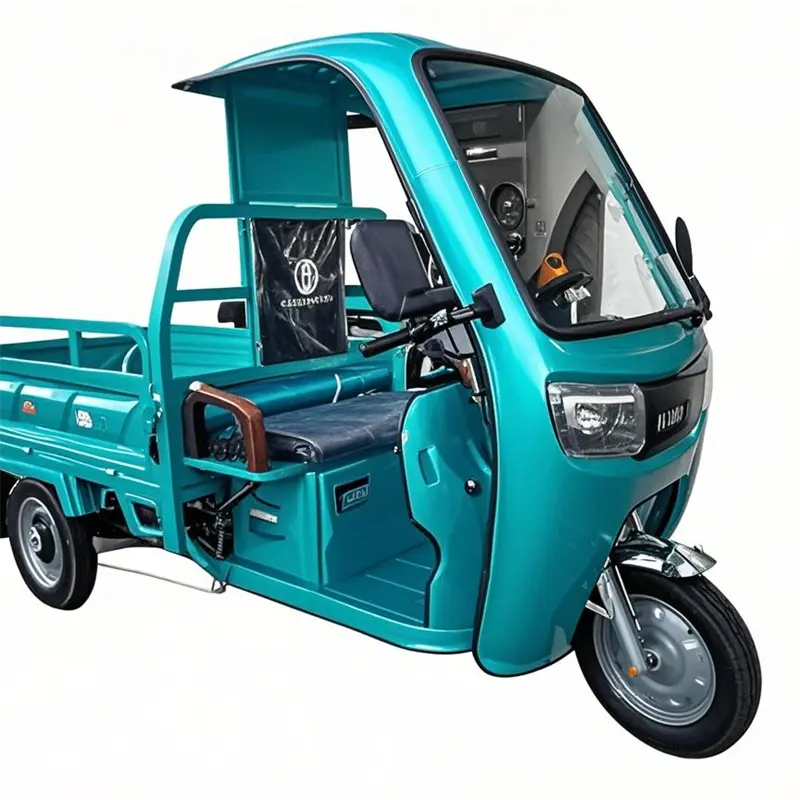Hello, I’m Allen, and for over a decade, I’ve been on the factory floor, overseeing the production of electric mobility solutions, from the first weld on a frame to the final battery-safety check. I’ve spoken with hundreds of B2B partners, from large distributors to niche rental companies. A question I get almost every day is: “What’s the real difference between pedal-assist and throttle e-bikes, and which one should I stock?” Understanding this distinction is not just a technical detail; it’s the key to unlocking the right market segment and ensuring your customers get a product they love. This article is for business owners like you—savvy buyers who need to look beyond the spec sheet and understand how these technologies translate to real-world performance, customer satisfaction, and ultimately, your bottom line. We’ll dive deep into the mechanics, regulations, and market fit for each system, providing you with the expert insights you need to make the most informed purchasing decisions.
What Exactly is a Pedal Assist E-Bike?
A pedal assist electric bike, often called a pedelec, is designed to augment your own effort, not replace it. The core principle is simple: the electric motor only activates when the rider is pedaling. It feels less like a motorized vehicle and more like you’ve suddenly developed superhuman legs. When you push on the pedal, a sensor detects the motion and engages the motor, providing a boost that makes every stroke more powerful. This system is perfect for those who still want the traditional bicycle experience and health benefits but desire a little help to tackle a tough commute, conquer steep hills, or simply travel further without exhaustion.
The beauty of the pedal-assist system lies in its intuitive nature. The rider remains fully engaged in the act of cycling. Most pedal assist e-bikes come with multiple levels of assistance, typically ranging from a low-power “eco” mode to a high-power “turbo” or “sport” mode. The rider can select the desired level of pedal assistance on the fly using a handlebar-mounted controller. This allows for a completely customized riding experience. Facing a steep incline? Crank up the pedal assist. Cruising on a flat, open road? Lower the assistance to conserve battery life and get more of a workout. This dynamic control makes the pedal assist bike an incredibly versatile machine.
From a manufacturing perspective, the integration of a pedal assist system requires careful engineering to ensure the power delivery is smooth and responsive. It’s not just about adding an electric motor and battery; it’s about creating a harmonious system where the electric components work in concert with the rider. The goal is to make the assistance feel so natural that the rider almost forgets it’s there. This is what separates a high-quality electric bicycle from a basic model. When a rider takes a test ride, they should feel empowered, not like they’re just along for the ride. The pedal is still king.

How Does a Throttle on an E-Bike Work?
If pedal assist is about augmenting your pedal power, a throttle is about providing power on demand, without the need for pedaling. A throttle-equipped electric bike operates much like a scooter or motorcycle. The rider can engage the electric motor by simply twisting a handlebar grip or pushing a lever, which propels the bike forward without pedaling. This functionality is a game-changer for many users, offering a completely different kind of e-bike experience. It provides the option for a completely effort-free ride, which can be a huge benefit for riders who may be tired, need to navigate tricky stop-and-go traffic, or simply want to cruise and enjoy the scenery.
The appeal of a throttle is its immediacy and ease of use. There’s no learning curve; you just push the throttle and go. This makes throttle-assisted e-bikes particularly popular for certain applications, such as urban commuting where quick acceleration from a standstill is a major advantage. For delivery services or couriers, the ability to get moving quickly without pedaling effort can save valuable time and energy over a long day. The throttle also serves as a fantastic safety net. If a rider finds themselves in a difficult situation on a hill or needs a quick burst of speed to merge with traffic, a simple push of the throttle can provide the necessary power instantly.
It’s important to note that many e-bikes that feature a throttle also include a pedal assist system. This combination offers the ultimate in versatility, giving the rider the choice to pedal for exercise, use pedal assist for a boost, or rely solely on the throttle for an effortless cruise. These are often categorized as Class 2 e-bikes in the United States. The presence of a throttle that allows the rider to ride without pedaling fundamentally changes the nature of the bicycle, and as we’ll discuss later, it has significant implications for regulation and where the bike can be ridden. The rider can propel the bike with just their thumb.
Are There E-Bikes That Offer Both Pedal Assist and Throttle?
Yes, absolutely, and this category of e-bike is one of the most popular in the North American market. These versatile machines are known as Class 2 e-bikes. They are equipped with both a pedal assist system and a throttle, offering the rider the best of both worlds. A rider can choose to pedal like on a traditional bicycle, engage the pedal assist mode for a helpful boost, or use the throttle to move the bicycle without the need to pedal at all. This flexibility is a massive selling point for a broad range of consumers.
The primary advantage of a Class 2 electric bike is its adaptability. Imagine a commuter who wants to get a light workout on their way to the office; they can use a low level of pedal assist. On the way home, after a long day, they might choose to rely more heavily on the throttle to cruise home with minimal effort. Or perhaps a recreational rider enjoys the exercise of pedaling on bike paths but appreciates having a throttle to provide a burst of power to get up a particularly steep hill. These e-bikes cater to unpredictable needs and varying energy levels, making them an excellent all-around choice.
For distributors and retailers, offering Class 2 e-bikes can significantly broaden your customer base. These models appeal to a wide demographic, from older adults seeking a low-impact way to stay active to busy professionals looking for a reliable and sweat-free commute option. They are also ideal for rental fleets, as they accommodate riders of different fitness levels and preferences. The key is that these assist e-bikes still have a top motor-assisted speed of 20 mph (for both pedal assist and throttle), which keeps them compliant with many local regulations governing bike paths and multi-use trails, though rules can vary. Having e-bikes that also have a throttle is a strategic inventory decision.

Which System is Better for the Rider’s Health and Fitness?
This is a crucial question for many potential buyers, and the answer is quite clear: pedal assist systems are inherently better for health and fitness. Because the electric motor on a pedal assist e-bike only engages when the rider is pedaling, it ensures the rider is always participating in the physical act of cycling. It turns exercise from a chore into a joy. A rider can cover longer distances and tackle more challenging terrain than they could on a regular bike, all while still getting a significant cardiovascular workout. It’s exercise, but with the difficulty turned down just enough to make it consistently enjoyable.
Research has backed this up. Studies have shown that people who ride pedal-assist e-bikes often get just as much, if not more, weekly exercise as those riding a conventional bicycle. Why? Because the assistance makes cycling more accessible and less intimidating, encouraging riders to get out and cycle more frequently and for longer durations. A rider who might be hesitant to face a 10-mile commute with big hills on a traditional bicycle might do it every day on a pedal assist electric bike, reaping the cumulative health benefits. The system simply removes the barriers that stop many people from cycling in the first place. You still have to pedal, but the effort is manageable.
A throttle, on the other hand, offers the option to be sedentary. While a rider can still pedal on a throttle-equipped e-bike, they don’t have to. The temptation to simply twist the throttle and cruise can be strong, especially when tired. This doesn’t mean throttle e-bikes have no health benefits—they still get people outdoors and active who might otherwise be in a car. However, for a customer whose primary goal is fitness, a pedal-assist system, especially a pedal-assist electric bike without a throttle (a Class 1 e-bike), is undoubtedly the superior choice. It guarantees that every bike ride involves a healthy dose of pedal power.
What Are the Key Differences in Technology: Torque Sensor vs. Cadence Sensor?
As a manufacturer, this is where we separate the good e-bikes from the great ones. The sensor is the brain of the pedal assist system, and the choice between a cadence sensor and a torque sensor dramatically changes the riding experience. Understanding this is vital for a distributor who wants to offer a premium product. A cadence sensor is the more basic and common of the two types of sensors. It works like a simple on/off switch: it detects that the pedals are rotating and tells the e-bike motor to turn on. The rider then uses a controller to select from different levels of pedal assist, which determines how much power the motor outputs. The main downside is that the assistance can feel “jerky” or delayed, as it provides a set level of power regardless of the rider’s actual pedaling effort. You just have to turn the pedal crank, and the power comes on.
A torque sensor, in contrast, is a far more advanced and intuitive technology. It measures how hard the rider is pushing on the pedals. The harder you pedal, the more power the electric motor delivers. This creates a beautifully seamless and responsive ride that feels like a natural extension of your own body. The electric assistance is proportional to your effort, making for a smoother ride and more efficient use of the battery. When you climb hills, the bike feels like it’s working with you, not just dragging you up. For any rider who values a premium, high-performance feel, a torque sensor is the only way to go. It truly replicates the feeling of riding a conventional bike, just with bionic legs.
Here’s a simple table to break down the pros and cons:
| Feature | Cadence Sensor | Torque Sensor |
|---|---|---|
| Riding Feel | Power delivery can be abrupt or jerky. | Smooth, intuitive, and natural. |
| Control | Provides a set level of power based on mode. | Power is proportional to rider’s pedaling force. |
| Efficiency | Less efficient; can use more battery power. | More efficient; better battery life. |
| Cost | Less expensive to manufacture and purchase. | More expensive, found on higher-end bike models. |
| Best For | Casual riders, budget-conscious buyers. | Discerning commuters, performance riders, enthusiasts. |
As a partner, knowing this difference allows you to curate your inventory effectively. You can offer affordable cadence sensor models for entry-level customers and premium torque sensor e-bikes for those seeking the very best electric bike experience.
How Do Regulations Affect Pedal-Assist and Throttle E-Bikes?
This is perhaps the most critical consideration for any B2B buyer, especially in the US and Europe. Navigating the patchwork of laws is essential for compliance and market access. In the United States, many states have adopted a three-tiered classification system for e-bikes, which provides a useful framework for understanding the legal landscape. As a distributor, you must ensure the e-bikes you import are properly classified and labeled.
Here is a breakdown of the three classes of e-bikes:
- Class 1 E-Bikes: These are pedal-assist only. The electric motor only provides assistance when the rider is actively pedaling, and it cuts off once the bicycle reaches a speed of 20 miles per hour. These e-bikes are generally permitted wherever a traditional bicycle is allowed, including on most bike paths and multi-use trails. This is the least restrictive class.
- Class 2 E-Bikes: This type of e-bike is equipped with a throttle that can propel the bike forward without the need for pedaling. Like Class 1, the motor assistance (for both pedal assist and throttle) is limited to a maximum speed of 20 mph. While still widely accepted, some trails and paths may restrict throttle-enabled bikes, so it’s crucial to be aware of local rules.
- Class 3 E-Bikes: These are also pedal-assist only (they cannot have a throttle to be classified as Class 3), but they are faster. The motor provides assistance up to a speed of 28 mph. Because of their higher speed, Class 3 e-bikes are often subject to more restrictions. They are typically prohibited from bike paths and multi-use trails and are often restricted to bike lanes or roadways. Many jurisdictions also have age restrictions for riders of Class 3 e-bikes.
For my partners in Europe, the primary regulation is EN15194. This standard largely defines a legal electric bicycle (or EPAC) as one with pedal assist that cuts off at 25 km/h (15.5 mph) and has a motor with a maximum continuous rated power of 250 watts. Any bicycle with a throttle that works without pedaling or that exceeds these specs is typically classified as a moped or light motorcycle, requiring registration, insurance, and a license. Ensuring your products comply with local regulations is paramount. We, as your manufacturing partner, take this very seriously, providing all necessary documentation and certification to ensure smooth importation and sales.
Which Type of E-Bike Offers Better Battery Range?
The question of how far an e-bike can go on a single charge is a top concern for every rider. The answer is heavily influenced by whether the bike is primarily using pedal assist or a throttle. Generally speaking, a rider will achieve significantly better range using a pedal assist system compared to relying solely on a throttle. When you use pedal assist, you are sharing the workload with the electric motor. Your pedal power does a portion of the work, meaning the motor doesn’t have to draw as much energy from the battery, especially in lower assist modes.
Using a throttle is like putting the accelerator to the floor in a car; it demands maximum power from the electric motor and a rechargeable battery continuously. This drains the battery much more quickly. A rider who relies exclusively on the throttle might see their potential range cut by 30-50% or more compared to a rider using a low-to-mid level of pedal assist over the same route. Think of it this way: every time you pedal, you are depositing energy into the system, which reduces the amount the motor needs to withdraw from the battery.
Of course, other factors play a huge role: terrain, rider weight, tire pressure, and wind resistance. However, all things being equal, pedal assist is the clear winner for maximizing the distances on a single charge. For customers who have range anxiety or plan for ideal for longer rides, this is a critical selling point. A pedal-assist electric bike, particularly one with an efficient torque sensor, offers the best strategy for avoiding the dreaded feeling of running out of power miles from home. When marketing e-bikes, it’s honest and helpful to explain that advertised range estimates are typically based on using lower levels of pedal assist, not continuous throttle use.
What Should You Consider When Choosing the Right E-Bike for Different Customer Segments?
Selecting the right e-bike inventory is not a one-size-fits-all process. As a distributor, your success depends on matching the right type of electric bike to the right customer. Let’s break down some key segments and what they look for.
For the daily commuter, reliability and efficiency are paramount. This rider needs an electric bike that can handle the daily grind of city streets. A Class 1 or Class 2 e-bike with a torque sensor is often the best choice, offering a smooth and responsive ride for navigating traffic. Features like integrated lights, fenders, and a rear rack for carrying a bag are huge pluses. This rider values a bike that makes their commute faster, cheaper, and more enjoyable than driving or public transit. A model like the YONSLAND H8 Lightweight 2 wheels electric ebike could be a perfect fit for this segment.
For the recreational rider or fitness enthusiast, the focus is on the riding experience. This customer might want to go off-road or explore scenic bike paths. A Class 1 electric bicycle with a high-quality torque sensor is ideal here, as it preserves the purity of the cycling experience while providing the assistance needed to tackle long distances and big hills. They want to feel the pedal, but with an added boost. For those interested in more rugged terrain, an electric mountain bike with robust suspension and durable components is the way to go. These riders are less likely to want a throttle, as their goal is exercise and engagement.
For commercial applications, such as food delivery or logistics, the needs are completely different. Here, practicality and power rule. A durable Class 2 e-bike with a powerful throttle is often preferred, allowing the rider to accelerate quickly from a stop without excessive physical exertion. Cargo capacity is also critical. This is where three-wheeled and utility e-bikes shine. For instance, a vehicle like the MINI TRUCK 1.5m electric 3wheels electric ebike offers immense carrying capacity and the stability that a two-wheeled bicycle can’t match. For these customers, the e-bike is a tool, and they need it to be tough, reliable, and capable of hauling a load.

As a Manufacturer, How Do We Ensure Quality in Both Pedal and Throttle Systems?
This question gets to the heart of a B2B partnership. For a distributor like David, whose reputation depends on the reliability of the products he sells, consistent quality control is non-negotiable. At my factory, we’ve built our entire process around this principle. It starts with sourcing high-quality components. The e-bike motor, whether engaged by pedal or throttle, must be robust. We partner with leading motor manufacturers like Bafang and Shengyi, subjecting their motors to rigorous bench tests that simulate thousands of miles of use under heavy loads, making it easier to ensure longevity.
The control systems, including the sensors (torque sensor and cadence sensor) and throttle mechanisms, are stress-tested for both durability and weather resistance. A throttle that fails in the rain is unacceptable. A pedal assist system that provides erratic power is a liability. We have dedicated quality control teams that inspect every connection and seal on the electric components to prevent water ingress and ensure flawless performance, regardless of the riding conditions. This meticulous attention to detail prevents the kind of field failures that can damage a brand’s reputation.
Most importantly, we focus on battery safety. E-bike batteries are the heart of the vehicle, and safety is our absolute priority. We offer battery solutions that are UL 2849 certified, which is the comprehensive standard for e-bike safety in North America. This involves rigorous testing for overcharging, impacts, and thermal stability. When you partner with us, you aren’t just buying an electric bike; you’re buying peace of mind, knowing that every single e-bike may have been built to the highest international safety standards. This commitment to quality is the foundation of a long-term, trustworthy relationship. The rider is always our first priority.
Why Partnering with the Right E-Bike Manufacturer Matters?
Choosing a supplier is one of the most significant decisions a distributor will make. It goes far beyond the product itself; it’s about finding a true partner who is invested in your success. A reliable manufacturer provides more than just e-bikes; they provide a stable supply chain, clear communication, and robust after-sales support. These are the elements that address the biggest pain points for importers—concerns over production delays, inconsistent quality, and a lack of support when issues arise. You need a partner who answers the phone, understands your market, and works proactively to solve problems.
A great partner also acts as your technical resource. The e-bike industry is constantly evolving, with new technologies and regulations emerging all the time. We see it as our responsibility to keep our partners informed and to provide the engineering support they need. Whether it’s providing detailed schematics for a throttle assembly, helping diagnose a pedal assist issue, or ensuring all our e-bikes meet the latest certification standards, we are here to support you. This includes a comprehensive spare parts program, ensuring that you can service the e-bikes you sell for years to come. Products like our universal Ebike/ Motorcycle Tubeless Tire and other accessories are always available.
Ultimately, the right partnership is built on trust and a shared vision for growth. We don’t just want to sell you a container of e-bikes. We want to build a long-term relationship, helping you select the right product mix, customize bike models with your branding, and navigate the complexities of international logistics. We understand that our success is directly tied to yours. When you choose to work with us, you’re gaining more than a supplier; you’re gaining a dedicated team on the ground, committed to delivering high-quality, reliable, and profitable electric mobility solutions for your business. The rider will thank you. The pedal is the first touchpoint, but the partnership is what endures.
Key Takeaways to Remember
To make the best choice for your business, keep these essential points in mind:
- Pedal Assist vs. Throttle: Pedal assist augments the rider’s effort, requiring the rider to pedal to engage the motor. A throttle provides power on demand, without the need for pedaling.
- The Best of Both Worlds: Class 2 e-bikes offer both pedal assist and throttle, providing maximum versatility and appealing to the broadest customer base in many markets.
- Fitness vs. Convenience: For customers focused on health and exercise, a pedal assist system is superior as it ensures the rider is always physically engaged. A throttle offers unparalleled convenience.
- Sensor Technology Matters: A torque sensor offers a smooth, intuitive, and premium riding experience by matching motor output to the rider’s pedaling effort. A cadence sensor is a more basic, cost-effective option.
- Know the Law: The three-class system (Class 1, 2, 3) in the U.S. and EN15194 standards in Europe dictate where and how different types of e-bikes can be ridden. Compliance is crucial.
- Range is Key: Pedal assist mode is significantly more energy-efficient and will provide a much longer range on a single battery charge compared to relying on the throttle.
- Quality is Paramount: A partnership with a manufacturer committed to high-quality components, rigorous testing, and internationally recognized safety certifications (like UL for e-bike batteries) is essential for long-term success and brand reputation.
Post time: Jul-09-2025




